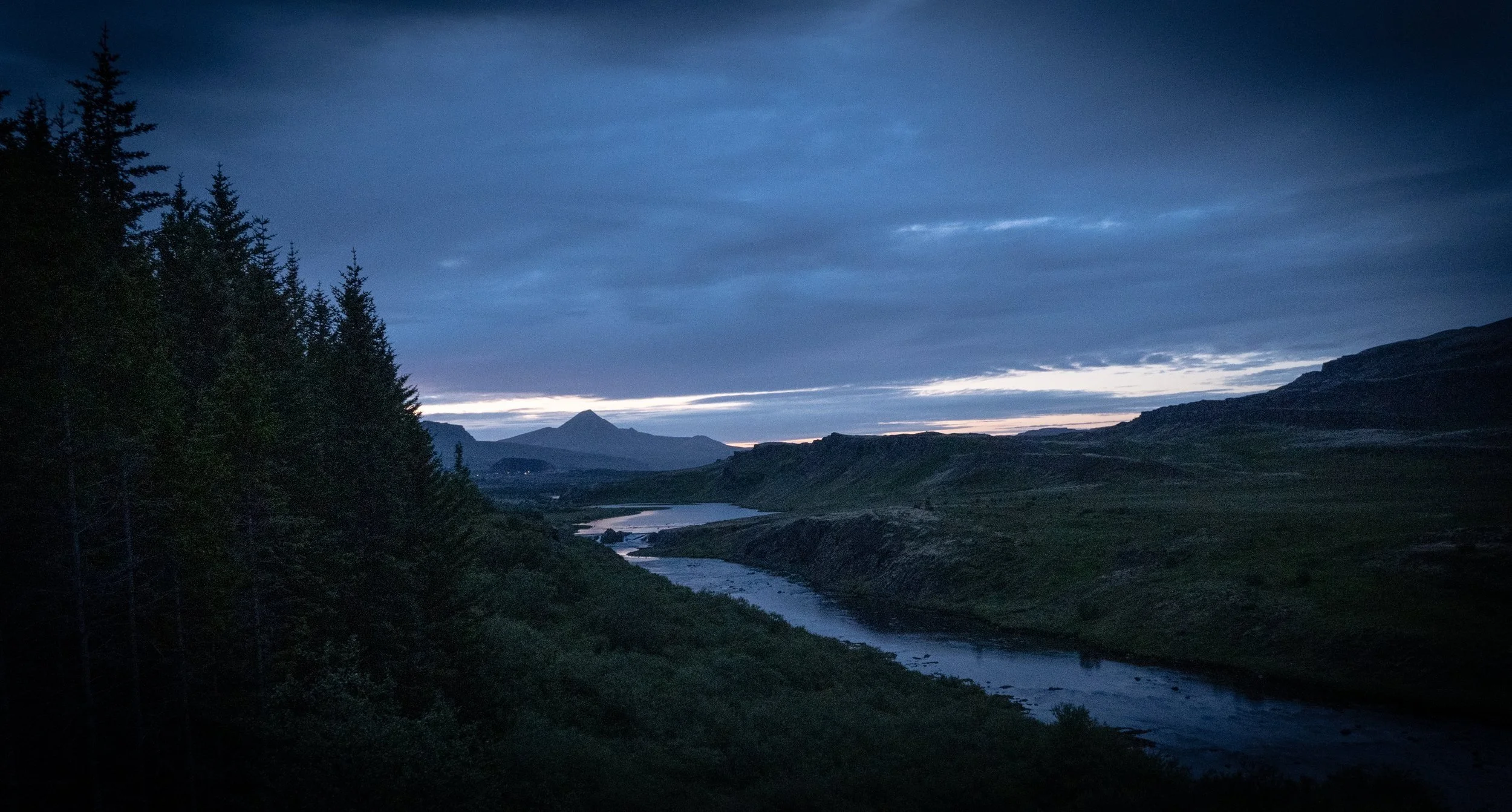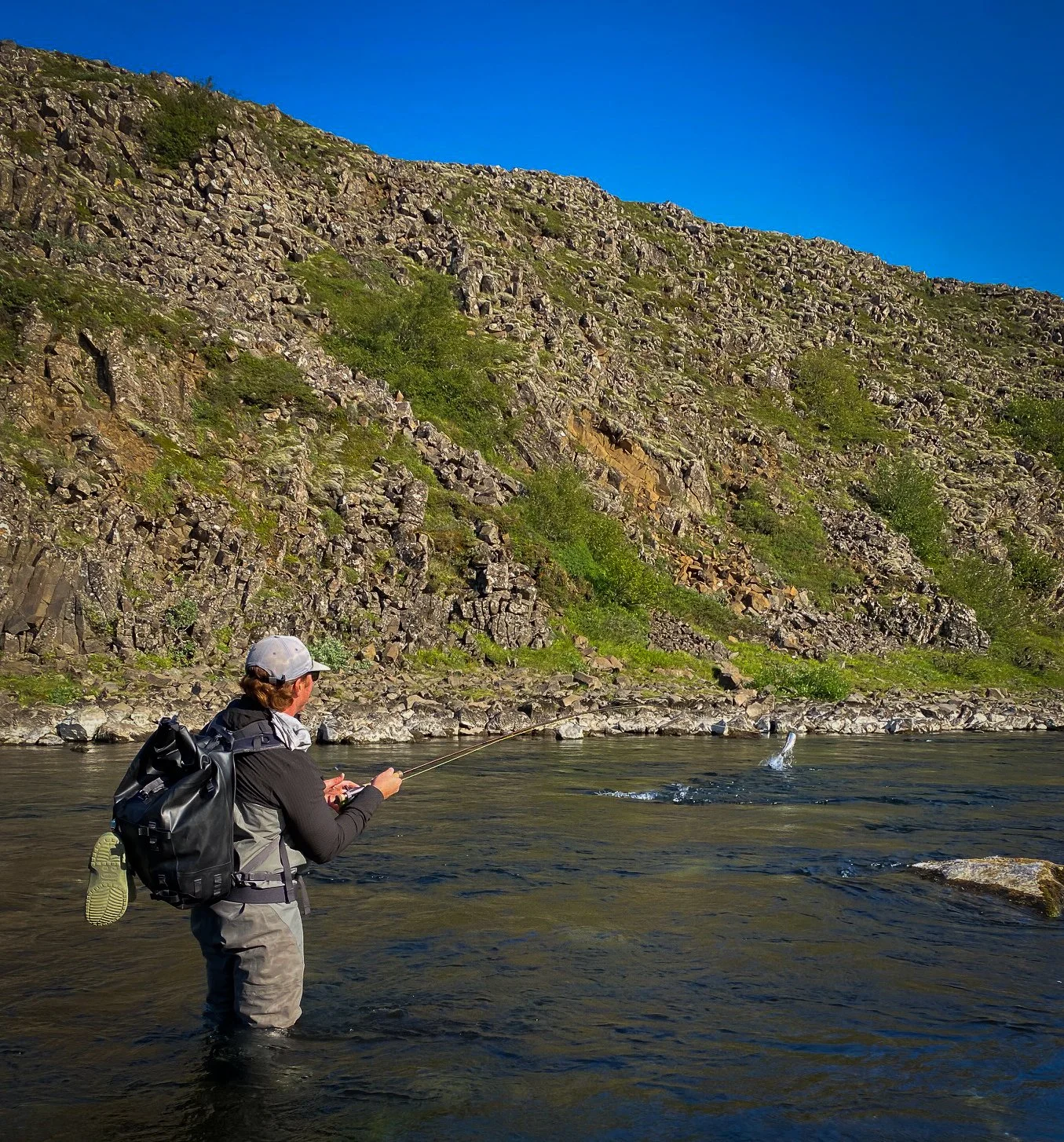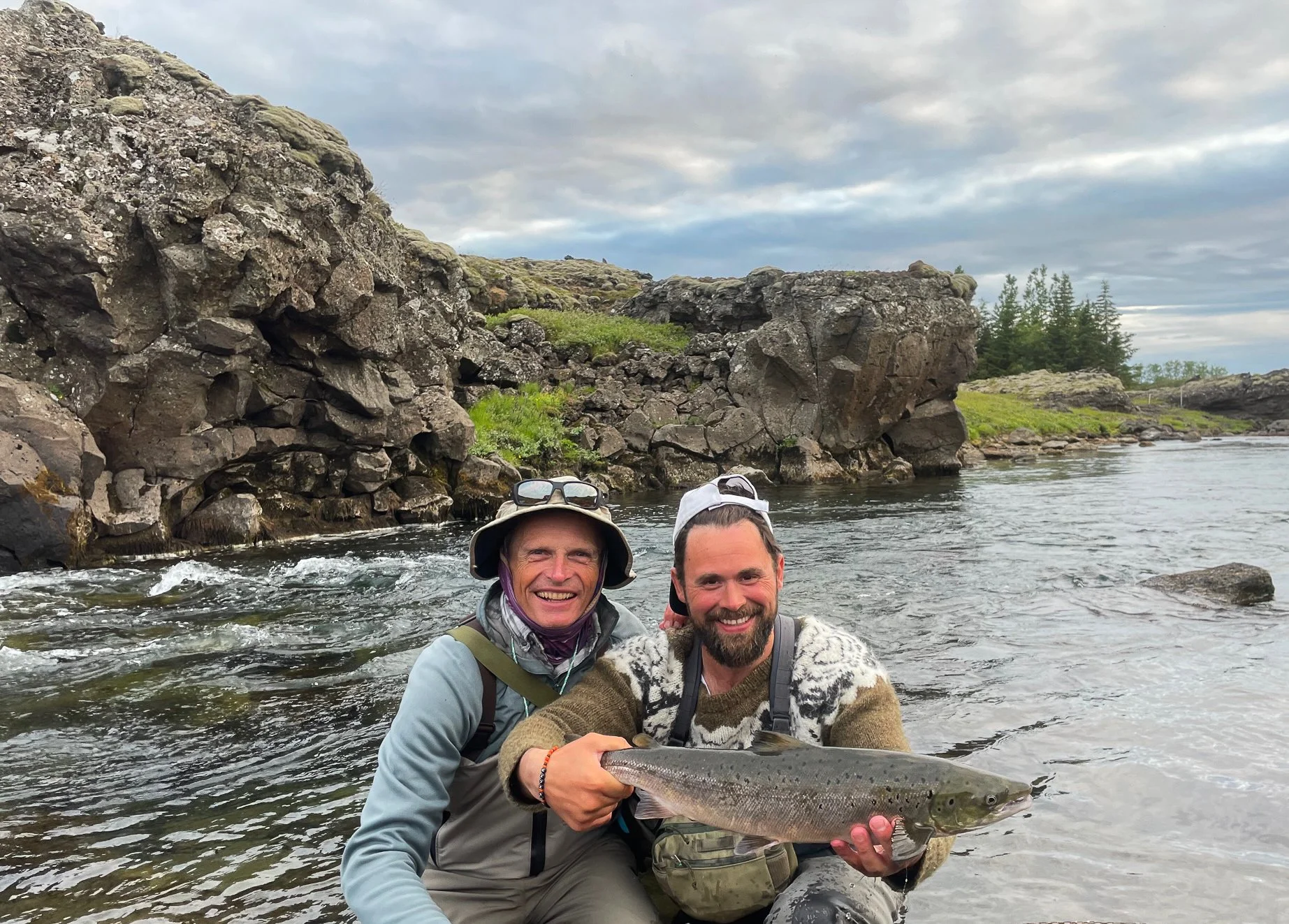Iceland Post Trip Report
Roughly a week ago, I returned from an absolutely unforgettable trip to Iceland to fish for Atlantic Salmon. The trip was hosted by none other than the legend himself, Simon Gawesworth, of Farbanks Enterprises. You might recognize Simon’s name from the hundreds of fly fishing instructional videos and books that he has produced. If you’ve ever googled “fly casting instructional video,” then you have probably seen Simon in action.
“Sunset” views from the lodge at 2AM.
Following a red eye flight from Denver, I found myself at the Nordura Lodge in Western Iceland, which I’m sure you can guess, is on the Nordura River. The Nordura River is a completely wild Atlantic Salmon fishery (i.e. no stockings) and is one of the most prolific salmon fisheries on the island. My perceptions of Atlantic Salmon were similar to that of steelhead, where you fish all week hoping to get the long awaited singular grab, which you then proceed to blow and waive goodbye to the fish of a lifetime. However, that was certainly not the case at Nordura. Before I get into the nitty gritty of the fishing and accomodations, I have to mention that the Nordura guide staff includes some of the best in the business and they know how to get the job done even under the toughest of conditions. Our trip to the Nordura was plagued by record low water conditions, which called for a change of tactics, which our guides had no problem accounting for.
Head Guide, Binni and Larry working a pool.
Rather than swinging the oversized two-handed spey rods, the majority of our fishing was actually done with a standard 9’ 8wt single handed rod. With the river being so low, the single handed 8wt provided added stealth that can’t be achieved with a larger spey rod. In fact, the river was so low and clear that you could easily spot pods of salmon from a far. Check out Simon’s video here.
Everyone in our group had shots at Atlantics each day and every angler landed at least one fish over the course of our stay. Throughout the duration of the trip some anglers even landed 10 or more, which as far as I understand is pretty rare.
Atlantic Salmon, similar to all Salmon, move into the river to spawn. While moving up from the ocean to their spawning beds in the river, they are expending tons of energy while actively not eating. This is a very important piece to consider when fishing for them. Rather than trying to trick them into eating, you are actually trying to induce an aggressive response. We used wet flies in a variety of sizes, as well as hitch flies that skate across the surface. The guides very meticulously delineated our approach to each pool/run and the flies in which to use, often with great success. To my surprise, a standard 45 degree angle swing of the fly rarely cut it. Each fly, run or pool was to be fished in a specific manner in order to find success. Hence having a good guide is critical.
The average fish in the Nordura is roughly 60cm but one of the anglers in our group actually managed to hook and land a behemoth that measured in at 86cm. As a frame of reference for you trout anglers, 60 centimeters is roughly 24”, meaning your average Atlantic Salmon in the Nordura is as big as a trophy brown trout. As with most Salmon fisheries in Europe and Scandinavia, there is a beat rotation that is assigned every morning, at random. The beat system ensures that you are the only one fishing a certain section of river at that predetermined time. It works out wonderfully because it allows you to cycle through varying sections of river, topography and scenery.
The scenery is unlike anything I’ve ever seen. Iceland is an actively growing volcanic island and the landscape is stark in contrast to most anywhere I’ve ever been. On the flight into Reykjavik, the capital city, you could actually see an actively erupting volcano. From where we were staying/fishing there were exactly zero bad views and often times you were within eye sight of large waterfalls, mountains and volcanic rock formations.
One of the added pieces that made this trip so special for me was the 1-on-1 coaching I received from Simon. Prior to this trip I had seldom used a traditional two-handed spey rod. Simon spent the better half of one evening working to improve my spey cast, as well as doing a full 4 hour session with the entire group one morning to work through snap T’s, double spey and snake rolls. Simon was immensely helpful and I cannot overstate the value of his casting instruction.
Bini and Simon with a good one in small technical water.
All this to say, I couldn’t have enjoyed this trip more. The people, place, river, food and everything in between, came together to make this the trip of a lifetime. I look forward to returning in the not so distant future!
If you’re interested in global angling travel, please feel free to contact me to discuss locations and fisheries in further detail. You can reach me at rbrooksflyfishing@gmail.com



